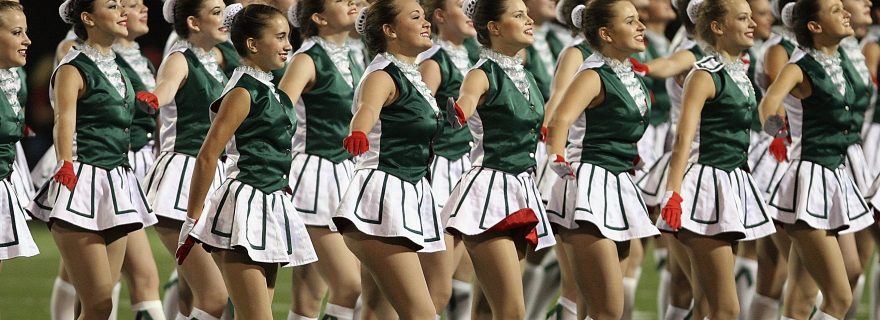Should you bring your friends to a date?
Whoever watched <i>How I Met Your Mother</i> is familiar with Barney Stinson’s ideas about women. One of his many theories is the cheerleader effect. Presumably, girls look more attractive in a group than individually. But is this true? Read and find out.
Everyone likes to look as good as possible, preferably without too much effort. Thus, humans come up with different ways to present themselves as physically attractive to others. Apart from wearing the latest fashion and reshaping your face with contour make-up, you could possibly use your friends to appear the best you can. But how?
The science behind the cheerleader effect
The cheerleader effect entails that people seem more attractive in a group than in isolation, and you do not even have to be a cheerleader! Walker and Vul (2013) studied this phenomenon among US university students and found robust evidence in favour of this idea. The principles that underlie this effect are as follows:
- our visual system computes an average face of the group,
- individual faces are biased to look like this group average,
- the ‘group average face’ is perceived as attractive,
- an individual is perceived as more attractive in a group, than alone.
So, firstly, whenever humans perceive a group of elements (like dots, squares, or faces), the visual system immediately computes an average representation of those elements. This could be the average dot, square, or face – whatever group of elements is presented (see picture on right). Although you may not notice this, it is one of the many automatic cognitive processes that happen in our brain. Secondly, individual elements are biased to look like the average that is computed. In other words, our cognition works in such a way that the individual elements seen in a group appear to be more similar to the average of the group than when seen alone. In this case, it means that the faces of individuals seem to look more like the average that was unconsciously produced. Thirdly, this ‘group-average-face’ seems physically attractive, mainly because unattractive factors are leveled out. For example, if one person in a group of four people has a pimple on their right cheek, and the other three do not, the combined face will not have a pimple and look more attractive. As a result of these different processes, the individual faces are perceived as more attractive in a group than they would have been if perceived individually. Our brain works in mysterious ways, right?
How you can benefit
Even more surprisingly, this effect already works in groups of four people. Which means that you do not need many friends to step up your game! In fact, group size does not seem to have an effect, and neither does your position in the group (i.e. more in the middle or on the side). Also, the effect works for men and women, so everyone can benefit!
What you can do with this information, you wonder? Use it to your advantage: bring friends to a date, post pictures of yourself in a group, and sit with others when your new boss enters the room. If you want to optimally make use of the cheerleader effect, try to find group members whose facial features complement your unattractive idiosyncrasies. However, when you are tired of being surrounded by others, use this blog as an excuse to watch How I Met Your Mother. Who knows what else Barney Stinson might teach us…
Not convinced?
The Cheerleader Effect, May, Scientific American (2013)
The Group Attractiveness Effect, Van Osch et al., Personality and Social Psychology Bulletin (2015)


0 Comments